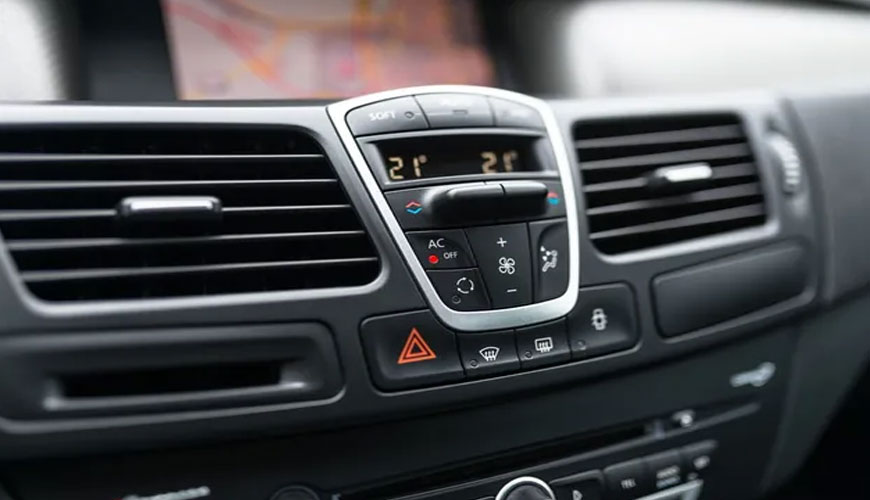

The standard "Renault D49 3046 Odor emissions - Interior equipment parts - Measurement of the intensity and characterization of the odor coming from the parts in the air conditioning room in the passenger compartment" developed by the French automobile company Renault describes a test method for measuring the intensity and characterization of the odor coming from the parts in the air conditioning system in the passenger compartment of vehicles. In this test method, the intensity of the odor coming from the parts in the air conditioning system is measured and characterized.

It is known that the odor of an automotive cavity protector can be detected in the interior of the vehicle during driving due to negative pressure forces in the passenger compartment. To obtain more detailed information about odor composition, it is necessary to characterize odorants through emission test chamber measurements, which is a method for determining emissions of volatile organic compounds from vehicle interior parts and materials.
Indoor air quality, and especially the smell of vehicles and materials used, is very important for customer acceptance, health and well-being. To improve indoor air quality in vehicle interiors, the automotive industry is conducting various research to optimize vehicle interior components or the entire passenger cabin for odor.
In general, vehicle manufacturers and suppliers conduct odor analyzes by rating the general odor and essentially comply with the "VDA 270 Determination of odor characteristics" standard developed by the German Automotive Industry Association (VDA). In this standard, the test method described is a method widely used in the automobile industry. This test method is to evaluate odors emitted from parts and materials inside the car under the influence of temperature and climate.
Renault D49 3046 standard is mainly based on VDA 270 standard. In these tests, the materials and components of the vehicle coating and the parts in contact with the air supplied to the interior of the vehicle are heated at temperatures up to 1 degrees in a 3 or 80 liter glass container in a water or non-watery heat chamber, and the odor development is monitored under the influence of temperature and climate. Whether the odor in the headspace is detectable or offensive is then evaluated on a scale from 1 “undetectable” to 6 “unacceptable.”
Another approach used by vehicle manufacturers is to comply with the standard "ISO 12219-7 Internal air of road vehicles - Part 7: Odor determination by odor measurements in the internal air of road vehicles and in the test room air of trim components" developed by the International Organization for Standardization (ISO). According to this standard, odor detection is carried out, which defines the odor examination of the interior air of vehicles and the room air of trim components containing a larger volume. In this test method, the emission chamber air is sampled in bags and the overall odor is rated according to the VDA 270 standard.
Temperature inside the vehicle, vehicle brand, age and use of deodorizing products are important determinants of the qualitative and quantitative composition of volatile organic compounds accumulated inside vehicles. Additionally, regardless of the ventilation mode chosen, volatile organic compound concentrations in vehicles have been found to be greatly reduced under ventilation with settings that include high air circulation rates and exchange with outside air.
Meanwhile, instrumental analyzes of in-car air quality are mainly based on the comparison of substance concentration determined by gas chromatography-mass spectrometry (GC-MS).
Among the numerous tests, measurements, analysis and evaluation studies it carries out for businesses in various sectors, our organization also provides testing services for measuring the intensity and characterization of the odor coming from the passengers of vehicles, within the scope of the Renault D49 3046 standard, with its trained and expert staff and advanced technological equipment.
To get an appointment, to get more detailed information or to request an evaluation, you can ask us to fill in our form and reach you.